Look
Examination often shows some degree of obesity. The opposite foot is usually at least somewhat flat but usually asymptomatic. Some patients have a markedly antalgic or stiff gait.
The affected foot is usually flat but about 10-20% of patients have neutral feet and complaints localised to the tendon. Examination from behind shows hindfoot valgus and forefoot abduction demonstrated by the "too many toes sign". Normally, no more than 3 toes can be seen lateral to the ankle when viewed from directly behind the heel, but in an abducted forefoot 5 or "more" toes may be visible. This sign simply demonstrates forefoot abduction, not the presence of tibialis posterior tendonopathy.
It is important also to look at the tarsometatarsal joints, especially the first. Some patients with an acquired flatfoot have primarily 1st TMTJ instability or arthritis and may have an obvious breach at this level, or large osteophytes.
Patients with flat feet usually have excess wear of the medial heel and medial wall of the shoe at the level of the talonavicular joint.
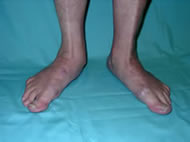
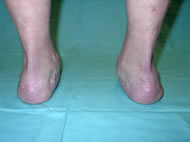
Right foot symptomatic acquired flatfoot. Left side also flat with heel valgus (but less so).
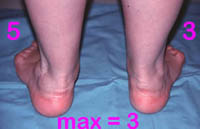
Too many toes sign. Left foot abnormal.
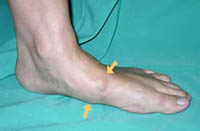
Bossing around TMT joint in degenerate acquired flatfoot
Feel
Palpation of the tendon may demonstrate tenderness, thickening, synovitis or a thinned or apparently absent tendon. The deltoid and spring ligaments should be carefully palpated. Tenderness may be found in the sinus tarsi, especially with hindfoot abduction.
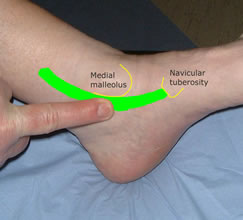
Palpation of the tibialis posterior tendon
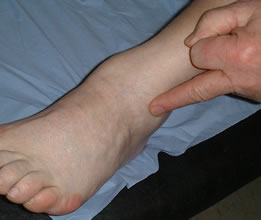
Lateral impingement pain in severe hindfoot valgus
